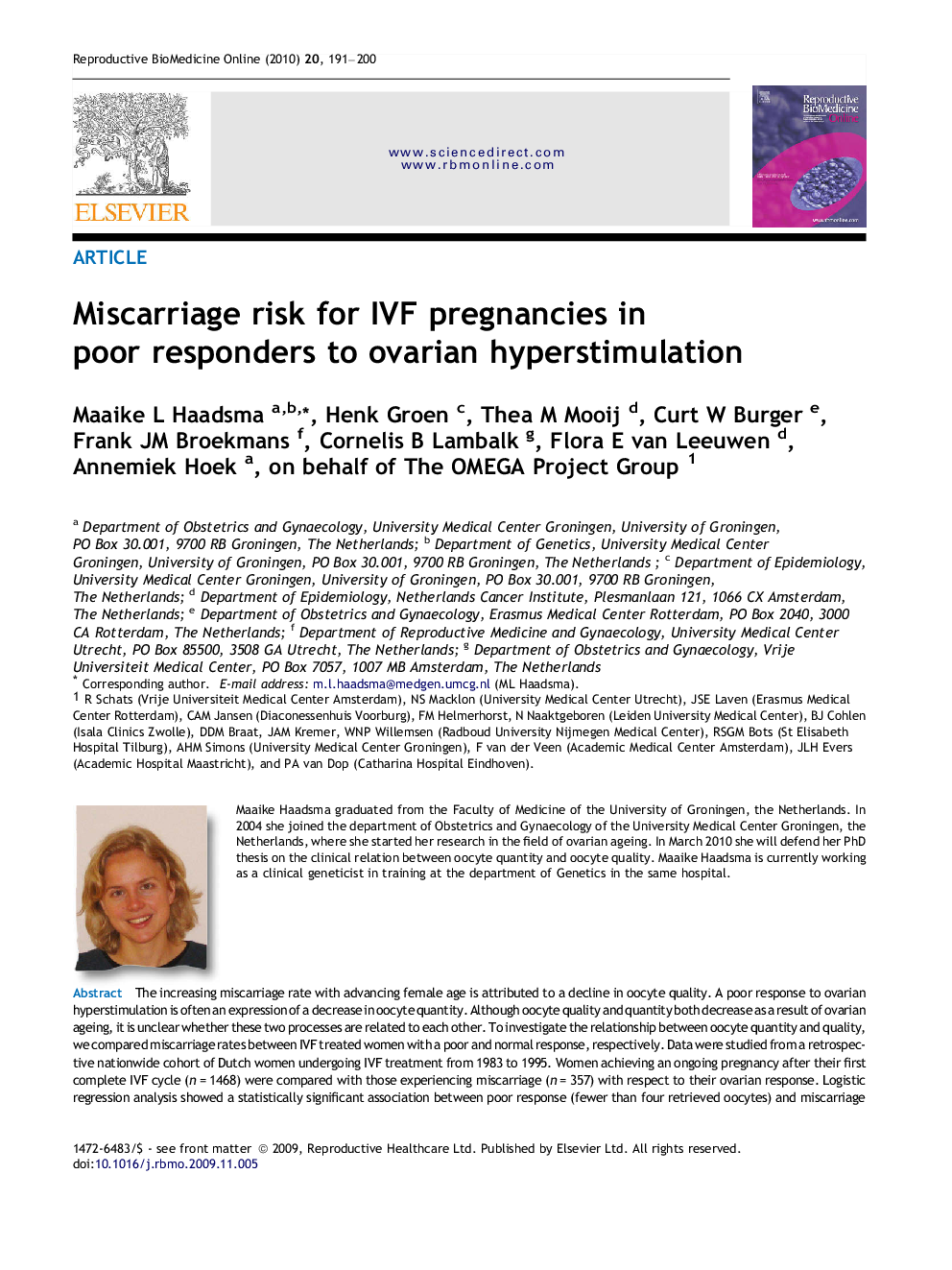| Article ID | Journal | Published Year | Pages | File Type |
|---|---|---|---|---|
| 3971007 | Reproductive BioMedicine Online | 2010 | 10 Pages |
The increasing miscarriage rate with advancing female age is attributed to a decline in oocyte quality. A poor response to ovarian hypestimulation is often an expression of a decrease in oocyte quantity. Although oocyte quality and quantity both decrease as a result of ovarian ageing, it is unclear whether these two processes are related to each other. To investigate the relationship between oocyte quantity and quality, we compared miscarriage rates between IVF treated women with a poor and normal response, respectively. Data were studied from a retrospective nationwide cohort of Dutch women undergoing IVF treatment from 1983 to 1995. Women achieving an ongoing pregnancy after their first complete IVF cycle (n = 1468) were compared with those experiencing miscarriage (n = 357) with respect to their ovarian response. Logistic regression analysis showed a statistically significant association between poor response (fewer than four retrieved oocytes) and miscarriage (P = 0.001). Due to interaction, this association became stronger with increasing female age. Among women <36 years, miscarriage rates between poor and normal responders did not differ, whereas among women ⩾36 years poor responders had a statistically significant increased miscarriage rate compared with normal responders (P = 0.001). These results support the hypothesis of a relationship between quantitative ovarian reserve and oocyte quality.
